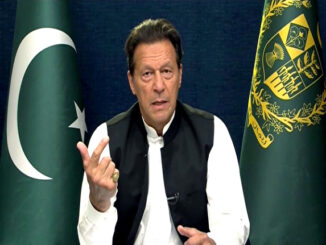
The year 2020 can arguably be the genesis of a new learning curve for humanity. A testament to the united struggle emanating from a pandemic that was not only challenging for the vastly under-prepared healthcare, but for politics, economy, environment, individual and interpersonal relationships as well. For the Modi-Shah government, however, 2020 was a testing year. From complete lockdowns with scarce preparation to the ghastly exodus of migrant workers, strained medical infrastructure, de-escalating economy, international standoffs and intense nationwide protests — it is clear the BJP government needs to undertake more corrective than developmental actions this new year.
Vaccine distribution
With India approving the Covid-19 vaccine developed by AstraZeneca and Oxford University, the beginning of a mass immunisation campaign will set forth in the world’s second most populous country, which is also the second worst-affected country by the padnemic. To ensure that 1.3 billion people of the country receive vaccine is not only a daunting task, but is complex in multitudes.
India’s vaccine distribution has to be coherent and seamlessly coordinated due to its underdeveloped infrastructure. With limited cold-chain capacity, India needs to be prepared for expanding its existing storage units at a frenetic pace. Poorer states like Jharkhand, Uttar Pradesh, Bihar will require greater investment from the central government.
The distribution of vaccine needs to be planned properly, from government medical store depots (GMSDs) or manufacturers directly to state vaccine stores to district level cold-chain points, Public Distribution System would be required to expand its range by at least two folds, while also deviating from its classic red tapism.
Revitalising the economy
Growing at its slowest in six years, the Indian economy is expected to contract further this year due to the coronavirus-induced lockdowns, dormant business activities and low consumption during the pandemic.
According to Reserve Bank of India Governor Shaktikanta Das, the Indian economy will contract 7.5 percent in FY21 due to the disruptions caused by the Covid-19 pandemic.
The Modi government bears the onus of sliding the economy out of the double-dip recession, and to this end, intellectually thoughtful decisions and fundamentally strong plans are expected from the BJP in 2021.
Tackling unemployment
According to the Centre for Monitoring Indian Economy (CMIE), over 122 million people were rendered jobless in April. A joint report by International Labor Organization and the Asian Development Bank estimated that around 4.1 million youth lost their jobs due to Covid-19.
This was because of the closure of business ventures, indicating that income losses were not only limited to individuals but also to enterprises. Small traders, daily-wage laborers were adversely affected as construction and agriculture were some of the worst-hit sectors. Furthermore, job losses and massive pay-cuts were seen in the organised sector as well, where according to the CMIE, around 5 million people lost their job.
Hence, Modi government is standing on a crucial juncture where post-Covid-19 India is seeking rehabilitation in terms of employment, not only in the informal sector, but also the more difficult, formal sector.
Managing farmers’ unrest
The standoff between the central government and farmers began in September last year, after the three farm bills were passed by the Parliament. Farmers from various states have marched to Delhi and have been protesting for around two month now.
Even after several rounds of talks with the central government, there is a massive deadlock regarding the primary demand of repealing the three laws, and no conclusion has been reached yet.
This growing agitation from the largest sector of the economy is arguably the biggest challenge that needs to be resolved by the Modi government in 2021. A crucial vote bank and a bidding ground for contentious politics with glowing promises of doubling income — BJP needs to be prove its fidelity to the farmers while keeping in mind its reform programmes. And this is certainly not going to be easy.
Ensuring educational
equity with online learning
As an immediate effect of the pandemic, educational institutions were forced to conduct classes online with platforms like Google Classroom or Zoom. This limited education only for those who could afford smartphones, computers, internet and power supply.
In a country like India, which is already vulnerable to high rates of school drop-outs, the pandemic was a massive blow to education. The full intensity of which will only be realised when schools reopen.
The closure of schools due to the pandemic is going to affect India’s productivity levels and its earning substantially.
The damaged education system not only affects students directly, but will also be challenging to the already destabilised economy. The BJP government will have to push its political juggernaut to a more far-reaching agenda on 2021, which requires micro-level planning.





Be the first to comment